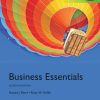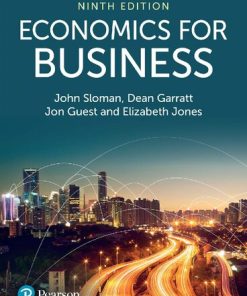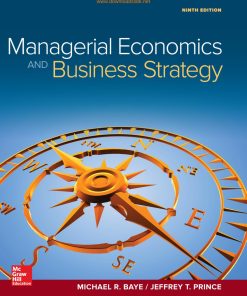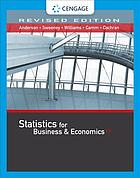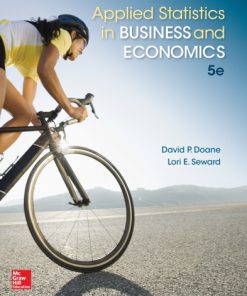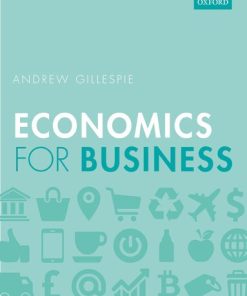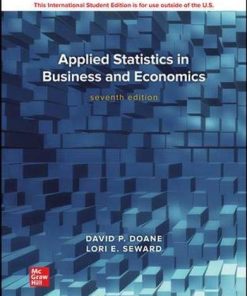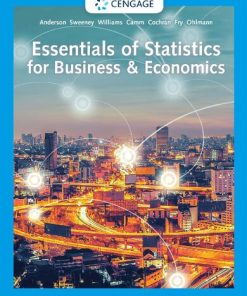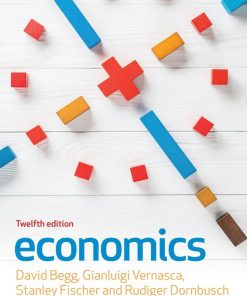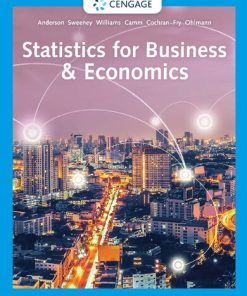(EBOOK PDF)Economics for Business 6th Edition by David Begg 9781526848147 1526848147 full chapters
$50.00 Original price was: $50.00.$25.00Current price is: $25.00.
Economics for Business 6th Edition by David Begg – Ebook PDF Instant Download/Delivery: 9781526848147, 1526848147
Full download Economics for Business 6th Edition after payment
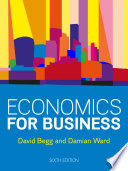
Product details:
• ISBN 10:1526848147
• ISBN 13:9781526848147
• Author:David Begg
Economics for Business
Economics for Business now in its 6th edition remains an essential introduction to economics for business students. It provides an accessible guide to the practical uses of economics and covers topics on the global economy; GDP growth as a policy; the rise of populism and Brexit.
Economics for Business 6th Table of contents:
Section 1 Introduction
1 Economics for business
Economics for business at a glance
1.1 What is economics?
1.2 Business economics in context
1.3 Why study economics for business?
1.4 Business data application: understanding the main economic resources within major economies
1.5 Appendix: the economist’s approach
Summary
Learning checklist
Questions
Exercises
Section 2 Understanding markets
2 Consumers in the marketplace
Demand theory at a glance
2.1 Business problem: what is the best price?
2.2 Introducing demand curves
2.3 Factors influencing demand
2.4 Measuring the responsiveness of demand
2.5 Income and cross-price elasticity
2.6 Business application: pricing strategies i—exploiting elasticities
2.7 Business application: pricing strategies ii—extracting consumer surplus
2.8 Business data applications
Summary
Learning checklist
Questions
Exercises
3 Firms in the marketplace
Cost theory at a glance
3.1 Business problem: managing fixed and variable costs
3.2 The short and long runs
3.3 The nature of productivity and costs in the short run
3.4 Output decisions in the short run
3.5 Cost inefficiency
3.6 The nature of productivity and costs in the long run
3.7 Business application: linking pricing with cost structures
3.8 Business application: footballers as sweaty assets
3.9 Business data application: wages and productivity
Summary
Learning checklist
Questions
Exercises
4 Markets in action
Market theory at a glance
4.1 Business problem: picking a winner
4.2 Bringing demand and supply together
4.3 Changes in supply and demand
4.4 Disequilibrium analysis
4.5 Price floors and ceilings
4.6 Pooling and separating equilibria
4.7 Business application: marketing pop concerts—a case of avoiding the equilibrium price
4.8 Business application: labour markets
4.9 Business data application: understanding supply and demand in the car market
Summary
Learning checklist
Questions
Exercises
Section 3 Competition and profitability
5 Market structure and firm performance
Perfect competition and monopoly at a glance
5.1 Business problem: where can you make profits?
5.2 Profit maximization
5.3 The spectrum of market structures
5.4 Perfect competition
5.5 Monopoly
5.6 Business application: when is a monopoly not a monopoly?
5.7 Business application: ‘Oops, we’re in the wrong box’—the case of the airline industry
5.8 Business data application: understanding the forces of competition
Summary
Learning checklist
Questions
Exercises
6 Strategic rivalry
Strategic rivalry at a glance
6.1 Business problem: will rivals always compete?
6.2 Monopolistic competition
6.3 Oligopoly theory: natural and strategic entry barriers
6.4 Oligopoly theory: competition among the big ones
6.5 Competition among rivals
6.6 Game theory
6.7 Game theory extension: first-mover advantage
6.8 Business application: compete, co-operate or gain a first-mover advantage?
6.9 Business application: managing supply costs—anonymous auctions for supermarket contracts
6.10 Business data application: pork scratching producers fatten up
Summary
Learning checklist
Questions
Exercises
7 Growth strategies
Growth strategies at a glance
7.1 Business problem: how should companies grow?
7.2 Reasons for growth
7.3 Horizontal growth
7.4 Vertical growth
7.5 Diversified growth
7.6 Evidence on mergers
7.7 Business application: horizontal growth by merger
7.8 Business application: vertical growth—moving with the value
7.9 Business application: economies of scope
7.10 Business data application: trends in mergers and acquisitions
Summary
Learning checklist
Questions
Exercises
8 Governing business
Governing business at a glance
8.1 Business problem: managing managers
8.2 Profit maximization and the separation of ownership from control
8.3 Principal–agent theory
8.4 Business application: stock options and the reduction of agency costs
8.5 Regulation of business
8.6 Externalities
8.7 Dealing with externalities
8.8 Merit, demerit and public goods
8.9 Price volatility
8.10 Market power and competition policy
8.11 Assessing government interventions
8.12 Business application: carbon trading
8.13 Business data application: impact analysis and smart metering
Summary
Learning checklist
Questions
Exercises
Section 4 Macroeconomics
9 Introduction to the macroeconomy
Macroeconomics at a glance
9.1 Business problem: business cycles and economic uncertainty
9.2 Macroeconomic issues
9.3 The circular flow of income
9.4 National income determination and business cycles
9.5 Business application: predicting the business cycle
9.6 Business application: profiting from recession
9.7 Business data application: finding and understanding data on key components of aggregate demand
Summary
Learning checklist
Questions
Exercises
10 Measuring macroeconomic variables and policy issues
Measurement and policy issues at a glance
10.1 Business problem: what are the macroeconomic policy issues?
10.2 GDP: measurement and policy
10.3 Inflation: measurement and policy
10.4 Unemployment
10.5 Balance of payments
10.6 Macroeconomic policies
10.7 Business application: international competitiveness and the macroeconomy
10.8 Business policy: inflation targeting?
10.9 Business data application: accuracy of economic data measurements
Summary
Learning checklist
Questions
Exercises
11 Exchange rates and the balance of payments
Exchange rates at a glance
11.1 Business problem: membership of the eurozone?
11.2 Forex markets and exchange rate regimes
11.3 Fixed versus floating exchange rates
11.4 The balance of payments
11.5 Exchange rates and government policy
11.6 European monetary union
11.7 Business application: monetary sovereignty, exchange rate depreciation and export growth
11.8 Business application: hedging
11.9 Business data application: real exchange rates within the eurozone
Summary
Learning checklist
Questions
Exercises
12 Globalization
Globalization at a glance
12.1 Business problem: how do we take advantage of the global economy?
12.2 Why is the global economy developing?
12.3 A closer look at the EU
12.4 To what extent are markets becoming global?
12.5 Business application: globalization—exploiting comparative advantage
12.6 Business application: sources of international competitiveness
Summary
Learning checklist
Questions
Exercises
Section 5 Macroeconomic Policy
13 Expenditure and fiscal policy
Economic stability and demand-side policies at a glance
13.1 Business problem: who’s spending and where?
13.2 Consumption, investment expenditure and the business cycle
13.3 Fiscal policy
13.4 Government’s approach to managing fiscal policy
13.5 Foreign trade and aggregate demand
13.6 Business application: debt funding and crowding out
13.7 Business application: taxation or government spending?
13.8 Business data application: understanding the fiscal position and the implications for business
Summary
Learning checklist
Questions
Exercises
14 Money, banking and interest
Money, banking and interest at a glance
14.1 Business problem: understanding how the monetary environment influences the commercial environment
14.2 What is money?
14.3 The banking system
14.4 Regulation
14.5 Credit creation and the money supply
14.6 The demand for money
14.7 Money market equilibrium
14.8 Monetary policy
14.9 Business application: monetary policy and investment
14.10 Business application: the importance of banking to the economy
14.11 Business data application: financial markets and the impact of quantitative easing
Summary
Learning checklist
Questions
Exercises
15 Inflation, output and economic policy
Inflation, output and economic policy at a glance
15.1 Business problem: following an economic event/crisis, how does an economy return to equilibrium?
15.2 Short- and long-run macroeconomic equilibria
15.3 Employment, inflation and output
15.4 Inflation, aggregate demand and supply
15.5 Short- and long-run equilibria
15.6 Monetary policy rules
15.7 Adjustment speed
15.8 Business application: understanding the interest-rate path
15.9 Business application: recognizing the importance of real business cycles
15.10 Business data application: understanding the formation of inflationary expectations
Summary
Learning checklist
Questions
Exercises
16 Supply-side policies and economic growth
Supply-side policies and economic growth at a glance
16.1 Business problem: assessing economic growth
16.2 Growth and aggregate supply
16.3 Neoclassical growth theory
16.4 Endogenous growth theory
16.5 Supply-side policies
16.6 Business application: how does innovation promote business?
16.7 Business application: the BRIC economies
16.8 Business data application: digging behind gross capital formation
Summary
Learning checklist
Questions
Exercises
Glossary
Index
People also search for Economics for Business 6th:
ebook: economics for business
statistics for business and economics 5th edition ebook
statistics for business and economics 14th edition ebook
statistics for business and economics 13th edition ebook
essentials of statistics for business and economics ebook
Tags:
Economics for Business,David Begg
You may also like…
Business & Economics
Business & Economics
Business & Economics - Mathematical Economics
Applied Statistics in Business and Economics 5th Edition David Doane
Business & Economics
Mathematics - Others
Applied Statistics in Business and Economics, 7e ISE 7th Edition David Doane
Business & Economics - Econometrics
Economics, 12e 12th Edition David Begg & Gianluigi Vernasca & Stanley Fischer & Rudiger Dornbusch



